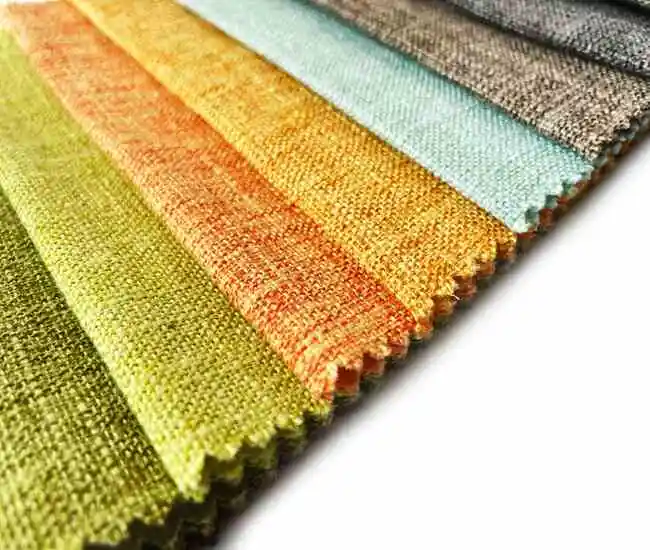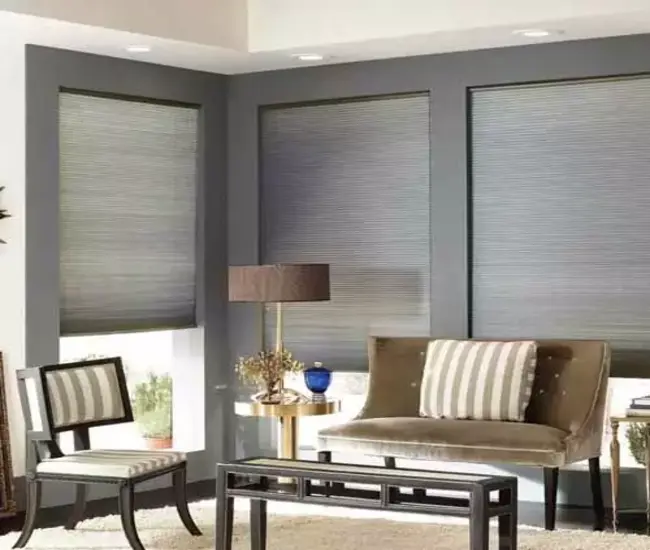What’s the best color for colorful window blinds or shades? Should your blinds’ color match with walls, trim, furniture, or overall decor? To assist you in your decision, we suggest 6 quick, practical tips to choose the right color for your new window blinds, which will serve your personal needs (privacy, light control, insulation) and enhance your decor.
There are 100’s of color choices for window blinds and shades, like true white, dove, ivory, gold, ice blue, moss, red velvet, chocolate, and charcoal. All colors have cooler or warmer tones to them.
You can go with neutral colors like white, gray, and beige, or bold colors such as red, green, and blue.
If you want to lighten up your home, we recommend white, cream, and pastel window blinds, as these colors reflect light and help to create a soft and refreshing atmosphere in your home, while also improving energy efficiency. For decorating your kid’s room, select colorful floral patterns.
Meanwhile, some window shades are available in different attractive patterns and prints, so you can choose a design that complements your room’s decor.
The specific colors and designs that you can choose will depend on the manufacturer, the type of window shade, the size of your room, and your room’s décor.
How do I Choose a Color for my Shades?
Just match the color of your blinds with your space. Here are some useful tips:
Consider Your Personal Style

Are you inclined towards classic, traditional, modern, or contemporary aesthetics? Your personal styles will influence your final decision on the choice of color or design for your blinds. Just have a clear vision of look and design your desire.
Matching Blinds with Wall Color

Matching your blinds to your wall color is one of the best ways to choose the right color for your blinds.
Matching Blinds Color with Window Trim or Molding
Another failsafe strategy that many lean on is matching blinds to your window trim or molding. With a straightforward choice, your blinds will beautifully complement a classic classic design style. Aligning blinds color with the window trim or molding will create a subtle backdrop, helping your room’s focal point shine. A timeless look will be enduring and a perfect fit for your preferences.
Choose Lighter Color for Spacious, Airy Look

Is your room smaller? A light color, like sand or snow will help to create a spacious, airy look in your living room, bedroom, dining room, kid’s room, or other space. With a lighter color, you can make your space feel brighter, bigger, and more!
Select a Darker Color to Add Depth to a Big Room
If you have bigger rooms or spaces with lots of windows, choose a darker color to add depth to your room and make it feel cozier. Darker colored blinds will also add warmth and intimacy to larger rooms or longer walls, breaking them up and adding engagements.
Match Blinds Color to Flooring or Fixtures
After renovating your living room, dining room, or kitchen, the flooring and cabinets look stunning. You can create coherence in your room by extending the colors of these permanent fixtures to your window blinds or shades. You can also match the blinds, accent chairs, rugs, books, or other accessories in your room. It will be better to choose different tones and shades of the same color family, rather than ensuring the exact color match.
Coordinate Blinds with Sliding Glass Door
If you have large sliding glass doors or patio doors, consider what the room will look like when the window blinds are shades are pulled closed and how much of your window covering’s color you are going to see.
Add Interesting Depth with Warmer Shades
Warmer shades add interesting depth and coziness to your modern space.
Choose Statement Color to Highlight Bold Design
If you want to highlight an existing bold design scheme, consider incorporating a statement color, such as dark gray.
Create Contrasts
To create beautiful color contrast, select complementary colors, especially those opposite each other on the color wheel.
Create a Monochromatic Look
To create a decent monochromatic look, choose blinds in the same color as your wall but in a different shade, i.e., either lighter or darker one.
Get Fabric Samples for the Best Color Match

Before buying your window treatments, ask the seller to send you fabric samples samples of the product and hold them up to your walls in different lighting. Many online blind stores, such as Affordableblinds.com, offer free samples of the window blinds prior to you purchasing them.
FAQs
Should window shades be lighter or darker than walls?
Depending on your taste for color and needs of the space, window shades can be both lighter or darker than the walls. Here are a few things to keep in mind:
- Make sure that everything blends well together.
- The blinds and walls should be at least one shade lighter or darker than each other.
- The window shades should be a similar tone.
- Consider the size of the wall. For longer walls, go with darker shades, shutters, or curtains.
What is the best color for roller shades?
Creamy whites, grays, natural browns, and charcoals are the best colors for roller shades, as they will help your sleek window treatments blind in more seamlessly into your interior. For better results, consider the size and design of your room. When it comes to functionality, if your roller shades are for blackout purposes, go with lighter colors, otherwise choose darker ones.
Need More Help?
Still unsure which window blinds color will best suit your personal needs and space? Get in touch for further help now! Use 24/7 live chat or give us a call at (800) 863-6109 to contact our experts for DIY solutions.
